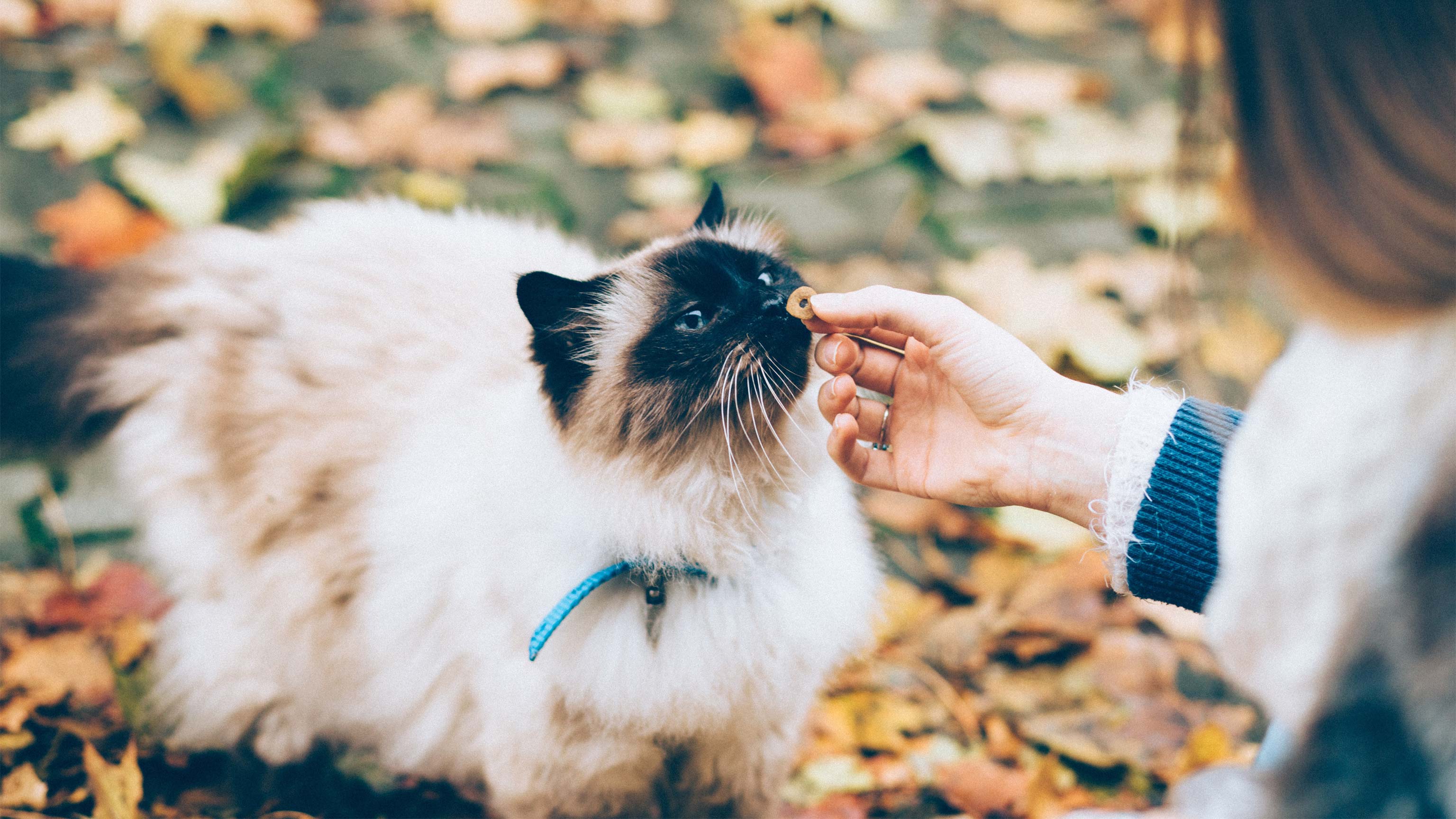The basic principles of animal welfare are:
- Animals must be provided with food and water.
- Animals must be handled properly.
- Animals must have access to health care.
- Animals must have environmentally appropriate housing that is suitable for their species and behaviour.
- Animals must have a lifestyle that is free from stress, pain, and suffering.
5 Freedoms of Animal welfare
There are 5 freedoms of animal welfare that all animals are entitled to. The 5 freedoms of animal welfare are:
- Freedom from hunger and thirst
Ready access to fresh water and a diet to maintain full health and vigour. - Freedom from discomfort
Appropriate environmental settings including shelter and a comfortable area for rest - Freedom from pain, injury and disease
Prevention of pain, injury and disease through proactive diagnosis and treatment - Freedom to express normal behaviours
Providing sufficient space, proper facilities and company of the same species - Freedom from fear and distress
Ensuring conditions and treatment that avoids mental suffering
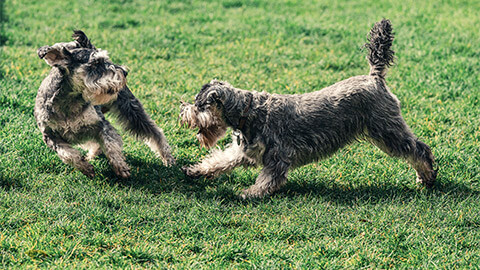
Dogs may have inside or outside lifestyles but must have their basic welfare needs taken into consideration. Any environment must ensure that the dog is safe from predators and also prevent the dog from being a predator themselves.
Housing
Dogs can be housed indoors and outdoors or a combination of both. When housing a dog the most important considerations are as follows.
- Outdoor enclosures are completely escape-proof. Dogs are very capable diggers, chewers, climbers, and jumpers.
- Bedding is made of non-toxic materials. Some dogs will chew and even swallow pieces of damaged bedding.
- Bedding also needs to be warm and dry and completely washable for convenience.
- Raise the bedding off the floor as this will assist with the drainage of urine and increase comfort levels for the dog. It is particularly important that raised bedding is provided for elderly and arthritic patients, to decrease the pressure on painful bones and joints.
- Provide toys that can be chewed. Dogs love to keep their teeth sharp by gnawing on fake bones or other toys.
Temperature and Ventilation
Depending on the dog's breed, age and condition, dogs should ideally be housed at a temperature between 15 – 25 degrees Celsius. Where possible major temperature fluctuations should be avoided. Good ventilation is essential to housing dogs comfortably inside. An outdoor enclosure must also have protection from the weather, for example, a kennel or covered enclosure of some type in which their bedding is kept.
Exercise and Socialisation
Dogs need regular exercise, some breeds more than others. Exercise can include walks, runs in the park, or chasing a ball. Exercise is an important social aspect for dogs. Dogs can live in groups or solitary. In the wild, they would live in packs, however domestic dogs see their human family as their pack.
Sanitisation
All dogs need regular bathing, teeth cleaning and treatment for insects and parasites. Depending on the type of dog and the amount of outdoor exercise you will also need to consider nail health and grooming and trimming of fur. Dogs are not as particular as cats, rabbits and rats about their toilet habits, so human owners will need to regularly remove dog waste to prevent illness in both the dog and humans.
Any bedding provided for the dog should be cleaned or replaced on a regular basis.
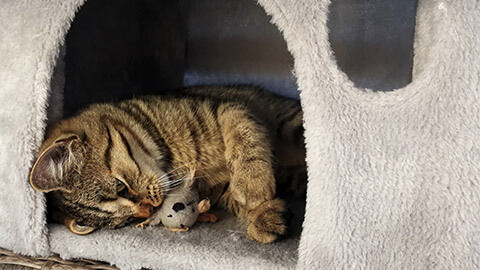
Cats are natural predators and will hunt birds, possums, mice, rats, and other small creatures. When advising clients on suitable living environments perhaps consider inside environments or specialty enclosures. Likewise roaming cats often get into fights or get attacked by other predators which can cause injury and disease.
Housing
Cats can be housed indoors and outdoors or a combination of both. When housing a cat the most important considerations are as follows.
- Indoor cats will require litter trays (one per cat plus one extra in a multi-cat housing situation is recommended).
- Provide a warm place to sleep and retreat.
- Provide scratching posts, climbing areas, and windows if the cat is being housed indoors. Cats love to keep their claws sharp, climb, play and bask in the sun.
- To prevent the cat from becoming a predator, some people provide specially designed outdoor cat runs, known as 'cat parks' or ‘catios’. Cat parks are outdoor, escape-proof enclosures and they provide a safe and secure way for cats to enjoy the sunshine and fresh air of the outdoors. The installation of a cat park also eliminates the chances of cats fighting with other cats, car accidents, injuring or killing wildlife, and getting lost or running away. Another option is a special kind of fencing, which prevents cats from leaving your property. You can see how it works here: What is the Oscillot® Cat-Proof Fence System? | CATFENCE
- If you are housing the cat long term you should also incorporate specific environmental enrichment elements to decrease the chances of boredom resulting in self-destructive behaviours. This may include specific cat toys.
Temperature and Ventilation
Depending on the cat's breed, age and condition, cats should ideally be housed at a temperature between 15 – 20 degrees Celsius Where possible major temperature fluctuations should be avoided. Good ventilation is essential to housing cats comfortably inside.
Exercise and Socialisation
Cats have a natural prey instinct, so love to chase their tails or a toy such as a ball. They love to climb, so the inclusion of a climbing frame is a valuable inclusion to their environment. Some cats will tolerate and even seek out human interaction while others are happy to entertain themselves. Cats can live happily with other cats or domestic pets; however, they do take a while to adjust to a new companion. Ensure you gradually introduce other animals to an existing cat, and be prepared for some initial hissing, growling, and even attacking.
Sanitisation
Cats are generally very clean animals, which is one reason they are popular indoors pets. However, you may need to try several different types of litter and litter boxes before finding one that suits your cat’s particular needs. Dirty litter will need to be removed on a daily basis and the entire litter box should be cleaned at least once a week. Used cat litter should be put in your rubbish bin, not flushed down the toilet as this can block the sewerage system.
Several times a week you should clean your cat’s teeth with a suitable product. You can also try dental chews if your cat is sensitive to brushing.
Check your cat’s ears on a monthly basis and clean as needed.
Case Study
Setting up for a new kitten
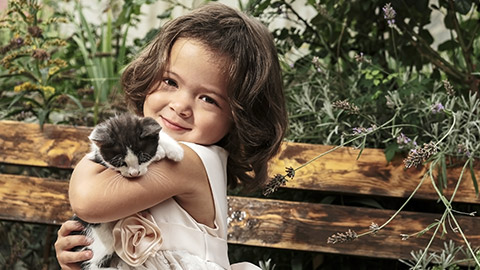
An excited young family approach Aroha at work to ask for help purchasing a litter box and cat litter. They have just gotten their daughter Anahera her first pet, a cute kitten they have called Fern. They tell Aroha that their cat will mostly be an indoor cat as they do not have a big yard.
Aroha shows them the kinds of litter and litter boxes that they have for sale.
“There are basically three types of litter box on offer: open trays, enclosed trays and automatic litterboxes. The most basic option in design and price is an open plastic tray. In the higher price range there are anti-spill open trays which are designed to prevent the litter being spilled outside of the tray. Open trays are affordable, but many people say that they can be quite messy, and that some cats do not like them.”
She explains, “Cats often prefer privacy when toileting and many cat owners have a better experience with enclosed trays. These are more expensive than open trays but will be a less stressful experience for you and your new kitten Fern. You will still have to clean the litter box in the same way as the open tray type, although some of the high-end models have a manual self-sifting handle to separate out the waste.”
The family asks what the difference is between enclosed litterboxes and automatic litterboxes.
Aroha explains, “Automatic litterboxes are electrical appliances that automatically sift used litter and self-clean. Premium models are Wi-Fi capable to send notifications to pet owners to empty the disposal drawers. Owners who buy these love them, but the price tag is much higher than the most premium covered litter box.”
The family decides to go with one of the standard covered litter boxes that Aroha’s shop has on offer.
Aroha askes, “What kind of cat litter would you like to use? We have clay-based litter, which is the most commonly used type in New Zealand. It clumps with moisture meaning it’s easy to pick out soiled litter without having to change the entire tray. It does a reasonable job of controlling smells. But if smell is going to be an issue for you, then crystal cat litter might be a better choice. This type of litter dissolves when it contacts with moisture but retains any odour meaning that it doesn’t need cleaning up as soon as clay-based litter. Environmentally friendly options include wood-based or paper-based litter, but these need more cleaning than the crystal or clay-based types.”
The family decide to go with the crystal-based litter and also add a poop scoop and litter liners to their purchase. They thank Aroha as they leave the store.
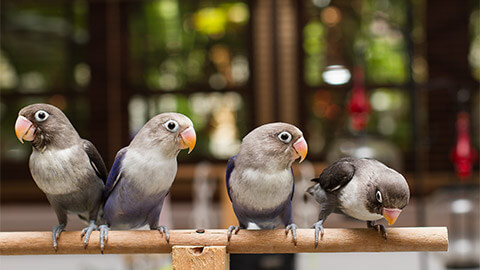
Birds are kept either indoors in cages or outdoors in aviaries. Cages are normally used to house one or two small birds; aviaries are suited to groups and/or larger birds.
Note: you might be interested to read the SPCA’s stance on keeping companion birds in cages.
Housing
It is important to inspect housing daily for signs of damage, as bent and broken wires can cause serious injury to curious birds.
Factors to consider when setting up a cage.
- Ensure there is adequate shelter, do not place the cage in direct sunlight or in the rain.
- The minimum cage size for a pair of birds should be three times their combined wingspan. Ideally, the birds should be able to fly around freely without hurting themselves.
- Perches should be of varying widths, consider having a natural branch in the cage for variety.
- Do not place water dishes directly underneath perches as they will become contaminated with droppings.
- Provide environmental enrichment, for example, bells, ladders, and mirrors. However, be mindful to not overfill the cage.
Factors to consider when setting up an aviary.
- Choose wire strength that reflects the type of birds being housed, large parrots have extremely strong beaks and can bite through the soft wire with ease.
- Vermin proof the aviary. Cats, mice, rats, ferrets, weasels and stoats prey on birds and will try to attack them. The aviary should have a concrete base to prevent access.
- Make sure the door is secured, many larger birds may be able to open doors using a combination of their beaks and feet.
- If housing breeding birds, the aviary needs to contain enough nesting sites for all pairs, and adequate nesting material should be provided, peat moss or coconut fibre will suffice.
- Perches should be positioned so that flight space is not reduced, there should also be enough perch room for all birds under shelter.
Temperature and Ventilation
- Do not place cages or aviaries in excessively draughty areas but remember that birds do enjoy some sun and fresh air.
Exercise and Socialisation
- Birds are social creatures and enjoy interacting with other birds. Consider housing in pairs or groups. If the bird must be housed individually then ensure it has plenty of interactive toys and a mirror to provide entertainment.
Sanitisation
Clean cages thoroughly at least once a week with hot water and a bird-friendly disinfectant. Food and water bowls should also be cleaned at the same time. Keep food and water bowls in an area in the cage where they are less likely to come into contact with bird droppings.
Line cages with newspaper or paper towels, which should be changed once a week. Wood chips or grit or pebbles are not suitable. Cages with wire floors are ok, because bird droppings can fall through the wire keeping the floor of the cage free of droppings. Wire floors will not hurt bird claws and are suitable for them to grip.

Rabbits are popular pets in New Zealand. They can be litter trained meaning that they make ideal indoor pets that have minimal mess to clean up after.
Housing
Rabbits can be housed either indoors or outdoors. Access to unfiltered sunlight and the opportunity to exercise daily is essential to their mental and physical health and wellbeing and must be taken into consideration if housing indoors. Outdoor rabbit enclosures are known as hutches and are either permanent structures or may serve only as temporary housing, to allow the rabbits to graze on grass and get some exposure to natural light. Indoor enclosures are known as pens or cages.
Factors to consider when setting up an outdoor hutch.
- The minimum size should allow the rabbit to stand upright on its back feet and take at least three successive hops, larger hutches are recommended.
- Construction materials should be chew-proof.
- Flooring should be made of wire or large netting. This allows the rabbits to graze and forage on grass. Be mindful that wire can lead to a condition known as pododermatitis. This is where the rabbit gets sores on its feet from rubbing on rough surfaces like wire.
- Bedding must also be used on the flooring in certain sections, hay, sawdust, straw, or chaff are usually used.
Factors to consider when setting up an indoor pen or cage.
- Plastic or stainless-steel cages with stainless steel floors can be used, although larger pens are recommended to allow more space per animal.
- Bedding must be used on the stainless-steel flooring, hay, sawdust, straw, or chaff are usually used.
- If free-roaming is allowed in a room or the entire house then protection from predators, dogs, cats, and small children, must be maintained.
Watering Systems
- Watering bottles can be made of glass or plastic, often plastic is preferred over glass due to its durability. Bottles must be made from a material that can be washed in detergents without breaking down. Stainless steel sipper tubes with a ball-bearing valve are inserted into the water bottle via a bung. Bungs may be made of cork or rubber and have a protective steel disk covering to prevent animals from gnawing them.
- Ceramic or earthenware bowls may also be used as watering systems for rabbits. However, bowls must be raised off ground level to ensure that rabbits cannot contaminate water by pushing bedding, food, and faeces into the bowl.
- Automatic watering systems are commonly used where there are a large number of rabbits housed together, such as in an animal house setting. Administering medications and water via automatic watering systems can save a lot of labour in these situations. However, there are several disadvantages with this method, rabbits may play with the watering system and leakage is quite common causing potential enclosure flooding. Regular maintenance of automatic watering systems is essential to control the build-up of bacteria and fungi.
Temperature and Ventilation
- If the rabbits will be housed entirely indoors (either temporarily or permanently), it is important to maintain a temperature of around 16– 20 degrees Celsius. A constant relative humidity of around 50% is ideal conditions for a rabbit as low relative humidity can cause respiratory problems. Access to fresh air is extremely important when housing rabbits, the bacterial breakdown of urea in faeces produces ammonia which can irritate the mucous membranes of animals and lead to respiratory infections. Adequate air exchanges will reduce the number of pathogens and odours and help maintain the desired temperature and humidity.
Exercise and Socialisation
- Rabbits are social creatures, so having more than one is encouraged. You can successfully mix rabbit species and also house rabbits with cats and dogs providing there is no inter-species aggression. However, housing guinea pigs with rabbits is generally discouraged as guinea pigs can contract fatal diseases (such as Bordetella Bronchiseptica) from rabbits.
Sanitisation
Outdoor hutches should be cleaned weekly. In a hutch, a rabbit will usually have a particular spot for droppings and urine, which makes it easy to clean. If your rabbit is kept indoors, train them to use a litter tray by placing their droppings into it. If no tray is provided they tend to use corner spaces as their toilet, which may not make their human companions happy. A litter tray in a suitable corner is an ideal arrangement for indoor rabbits. Litter boxes and bedding should be checked daily and cleaned as required. Thick newspaper, shredded paper, dust-free straw or paper-based and non-toxic litter is best for indoor rabbits.
Food and water bowls should be disinfected weekly. Discard any uneaten food on a daily basis.
Note: rabbits have two kinds of dropping: harder, darker droppings; and green droppings called caecotropes. Caecotropes are edible – so if you see your rabbit eating poop, this is normal!
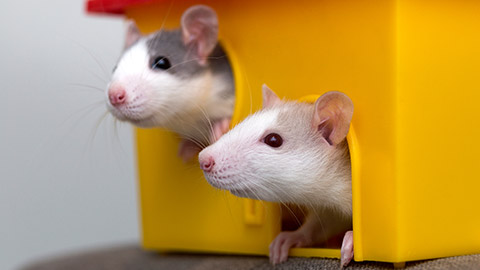
Mice and rats are popular pets because they are highly intelligent, affectionate, and provide hours of entertainment for their owners.
Housing
Typically mice and rats are housed in open-top cages with wire lids, care should be taken when removing them from their enclosure and when putting them back to ensure their toes and tails are not caught in the lid. Rodents are also great escape artists, able to fit their bodies into very small spaces - secure housing is essential for keeping them safe and contained.
Factors to consider when setting up a mouse or rat enclosure.
- Offer enrichment within the enclosure, a wheel, or other 'toys'.
- Provide hides and nesting materials.
- Protect them from predators, have a secure lid, and don't place the enclosure where animals such as cats and dogs can attack it.
Temperature and Ventilation
Mice and rats prefer warmer temperatures, and if necessary will huddle together and build nests to keep warm. Try to maintain enclosure temperatures between 19– 21 degrees Celsius. They will feel stressed if temperatures go past 30 degrees Celsius, so make sure that they are not placed in direct heat or sunlight.
Exercise and Socialisation
Mice and rats are very active, so an exercise wheel or similar in their cage is advised. Mice and rats live in social groups, these groups must be maintained from the time of weaning to limit inter-group aggression and so that they can establish a hierarchy. Males tend to fight (dependent on their breed) this must be monitored and provisions put in place to ensure inter-group aggression does not result in injury to more vulnerable animals.
Sanitisation
Rats and mice are naturally clean and will spend a significant period of time in the day grooming and cleaning themselves. They don’t need to be bathed, but male rats have glands at the base of their tails that may need additional cleaning with warm water to clear away any natural secretions.
Cages should be lined with paper or cat litter, topped with shredded paper, and cleaned every couple of days. Ammonia gas from urine can make rats sick, so cleaning cages is important. Fabric bedding and toys should also be washed on a regular basis.
Water and feeding dishes should be cleaned and disinfected weekly and any uneaten food removed and replaced regularly.
Activity
Take a moment to go over what we have just covered about maintaining the daily welfare of companion animals.
Pai ki a koe!
Wow you’ve made it to the end of Module 3! You are now more than halfway through your learning, so keep up the great work!
Summary
In this module, our focus has been on:
- Animal behaviours and body language
- Unusual behaviours and what they look like
- Safe handling of animals
- Safe capture and restraint of animals
- Grooming
- Feeding
- Enrichment
- Daily care
Our learning has been working towards the assessment which will involve a practical demonstration of how well you can handle animals. Let’s go over a few assessment tips now.
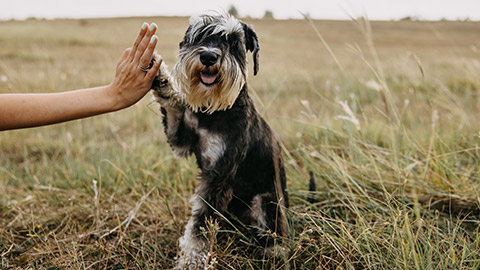
Congratulations on reaching the end of Module Three. Hopefully, you have already started your work placement and have been talking to your supervisor about your practical assessment.
Assessment Tips!
The assessment for this module will be a little different to the ones in Module 1 and 2. There are two parts to the assessment:
- Written questions
- Practical observations
The written questions will be familiar – they will still be based on case studies. You will answer the questions by applying the learning from Module 3, using your own words.
There are three learning outcomes to meet this time:
- LO3.1 Apply effective handling and transportation of companion animals in an animal care and welfare setting - Practical
- LO3.2 Describe day to day care of companion animals in an animal care and welfare setting – written questions
- LO3.3 Apply handling and husbandry techniques to assist day-to-day care of companion animals – Practical.
Learning outcomes 3.1 and 3.3 use the word ‘apply’ – this means ‘do’, which is the practical part of the assessment. You will:
- Handle a cat or a dog and one other companion animal to prepare them for transport
- Handle a cat or a dog and one other companion as part of its day-to-day care
In the assessment document there is an observation form with a list of the actions that you must do to pass the assessment. You will give this form to your supervisor, who will watch you perform the actions and will circle, check or tick that you can do each one. All actions must be completed. They may ask you to perform the action several times until they are happy that you can do this correctly. This is a normal part of the assessment, so don’t worry if your supervisor asks you to have another go.
The practical assessments have parts that happen on different days or occasions, so you will need to plan for this. It’s unlikely that your practical assessments will be completed in just one day.
Please check to make sure that your supervisor has signed your observation form as your assessment is not complete without their signature.
Both parts of the assessment should be submitted for grading at the same time so please ensure that you have all of your assessment pages saved together.
Kia kaha rā!
